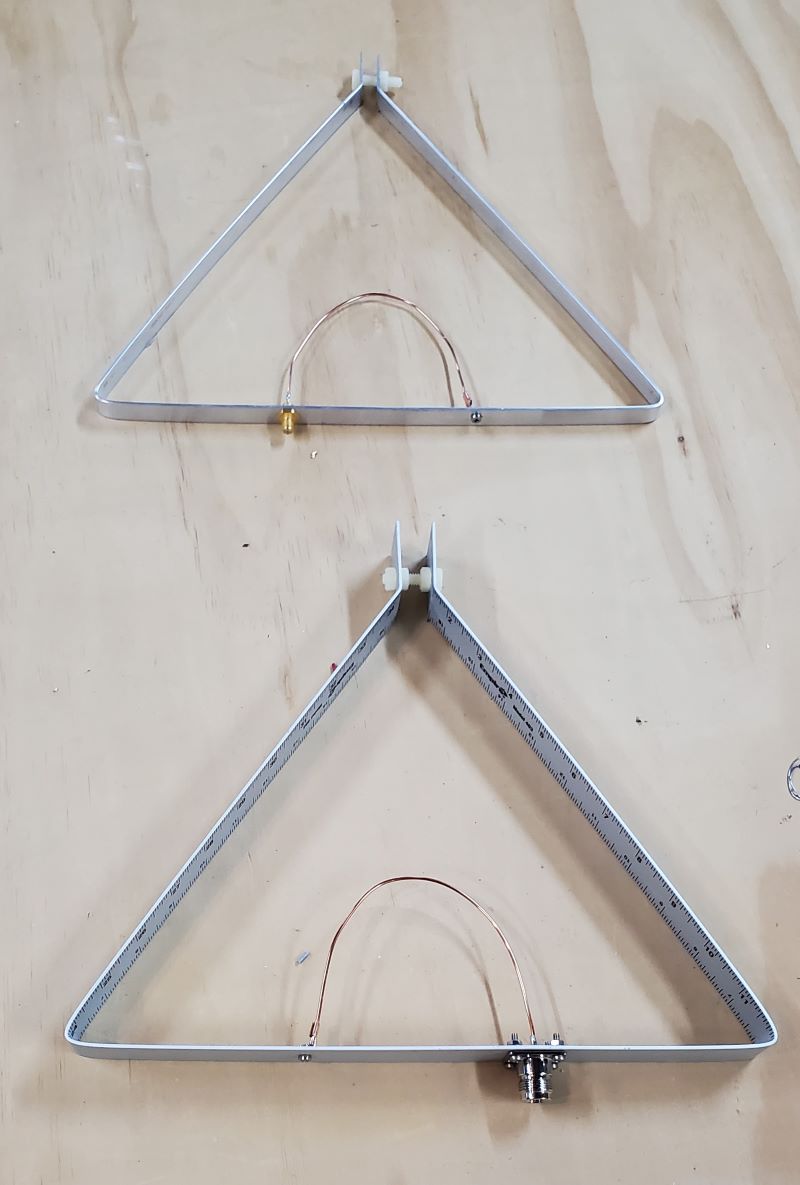Radio Beacons are used in HAM radio to test propagation. If you are able to receive a beacon on a given frequency you might also be able to make contacts with stations in the same area as the beacon, and on frequencies close by. Beacons can also be used to test antenna and receiver performances. Setting up test beacons for one or many HAM radio bands can be a large task. With HackRF One and Software Defined Radio (SDR) it can be a much easier task.
I have created a simple flowgraph that can select between 5 preconfigured frequencies on 6m, 2m, 70cm, 33cm, and 23cm. The flowgraph also includes a variable to define the beacon message. The message is a series of characters that will be translated into morse code when the program is launched.
Translation into morse code required the use of a custom block in GNU Radio Companion. Custom blocks can be written in Python and are relatively simple to get custom functionality into the flowgraph.
The image below shows the flowgraph with variables on the top and the logic at the bottom. I included a frequency sink to show where the signal is when the different frequencies are selected and to visualize the CW code.
![]()
The next image is a screenshot of the application running. The maximum output of HackRF One is 10-15dbm or 10-25mW so a small amplifier and an external antenna might help. In addition a valid HAM radio license is required to transmit any signal in the HAM bands.
![]()
Download the flowchart.
Update:
I made a new version of the flowchart for the multiband beacon. It now operates on 6 bands: 6m, 2m, 1.25m, 70cm, 33cm, 23cm. It can work on any number of bands/frequencies where each frequency is defined as an element in an array within the custom block that generates the CW code. It will automatically switch to the next band after completing a full transmission of the CW message.
My Kenwood TS-2000X deliveres 100W on HF, 6m and 2m bands and that is fine for most local communication. Getting a bit more power for weak signal work would make it a bit more fun. I purchased a kit on eBay that should be able to deliver 500W+ with 5W drive. Today installed it on a heat sink and applied 32V just to verify that it is working as expected.

The system is designed to work at 50V. I have a 28V and a 24V switching power supply that I will be using eventually, but the test with a handheld and a dummy load proved that the system is working as expected.
At 32V and 400mA drain current the system was tested with 5W in and 110W out. At this voltage the total current draw is 5.5A.
The kit was $47 plus shipping and the two LDMOS transisters ware ~$50 each on mouser.com.
The January 2023 edition of the QEX magazine includes an article about a horizontally polarized triangle antenna for the 2m HAM band. This looked to be an easy build and since I was able to work some FT8 contacts on my vertical dual band antenna a few weeks back I decided to go ahead and try the build. It started with a trip to the hardware store to purchase a 36" ruler and some nylon screws and nuts. While I was there I also picked up a 36" aluminum strip that was 1/2 inch wide and 1/16 inch thick. My thought was to test the build with two different versions.
The first step was to drill holes for the connectors and screws to attached the mounting wire etc. Then it was off to bending the metal at 60 and 120 degree angles to form a triangle open at one end. The open end are kept at a fixed distance with the nylon screw and nuts. Soldering the feed wire to the connector and the antenna is complete. The version with the small aluminum strip has an SMA connector and the version with the ruler uses an N connector, both female.
Next step was the antenna analyzer. Both version needed a bit of adjustment at the gap but that was easy to do. The analyzer showed that the resonance (low SWR) was a few MHz below the band edge. Increasing the gap 1-2mm moved the resonance up to about 144.2 MHz, right where I wanted it for FT8 operations. The SWR is around 1.2:1 and the antenna has a wide tuning area.
One of the antennas are now mounted about 5 feet above my garage and ready for testing tomorrow evening.
